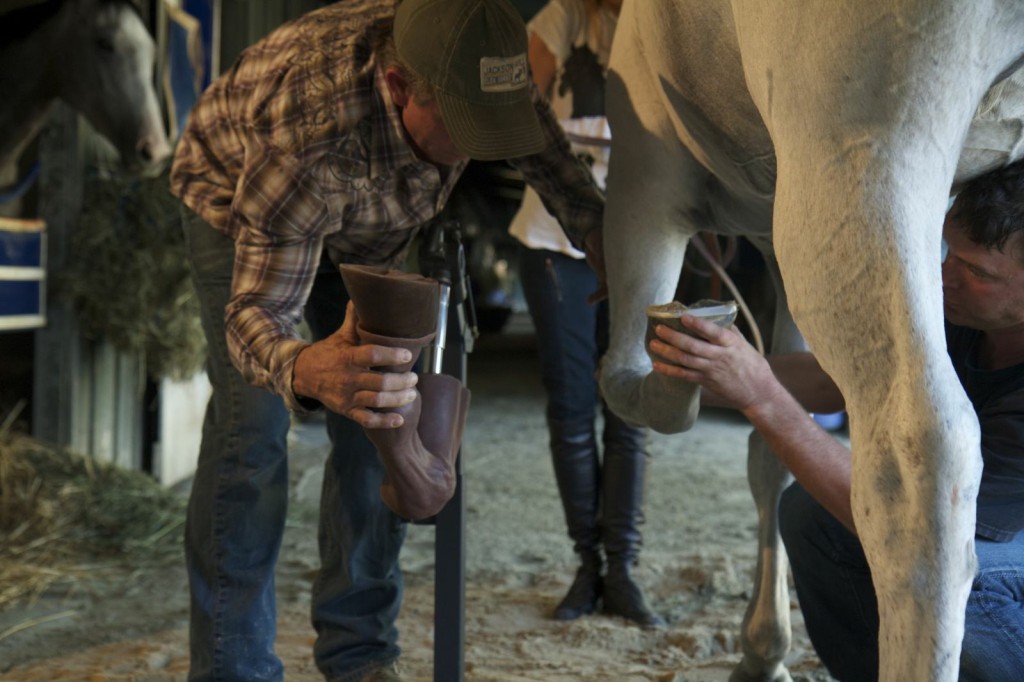Farrier’s Tips for Learning Horseshoeing
When a student learning horseshoeing commits to his craft, he (or she) is entering a traditional profession that has been around since the 5th century and was once considered to be an essential part of the Blacksmith’s services. The core skills of the farrier today are relatively unchanged since medieval times, and the student falls into the same role of the Blacksmith’s apprentice as many others have before him during the past 800 years.

Here are a few tips to start the development of these important core skills:
Get very familiar with working with horses. Horses can sense when someone is uneasy around them, and they respect someone who is confident and clear in their movements. A new student should take the time to be around horses as much as possible to ensure he is a calm and confident handler, especially since the majority of his job will be working under the horse, in the most vulnerable areas.
Develop upper body strength. Working as a farrier is a physically demanding job. A farrier must be able to contend with difficult horses that do not want to hold their feet up, and this means being able to keep hold of a leg using his shoulders, arms and firm grip – all while in a bent over position. He also has to develop the arm strength and stamina to work the metal with a heavy hammer in searing heat. Horseshoeing is more physically demanding than most construction jobs.
Learn the anatomy of the horse’s foot in great detail. Do not just memorize the parts of the foot, rather seek to understand how they mechanically work together for the health of the horse. For example, the “frog” of the foot is like a cushion that when compressed by the horses’ weight, it serves as a pump to move the blood back up the leg. Understanding the impact of a horseshoe’s weight, shape, and thickness are critical if a farrier is looking for ways to help correct or enhance a horses gait with a custom shaped shoe.
Learn the differences in breeds of horses and their hooves. For example, Thoroughbreds are notorious for having very thin hoof walls making it challenging for Farriers to nail in the shoes without hitting the sensitive inner parts of the hoof and causing lameness. Some breeds have naturally strong hooves, such as Mustangs.
Learn the different uses a client’s horses are put to. Horses used for light pleasure riding can be shoed very differently from horses used in 3-day cross-country event competitions, playing polo or for pulling heavy wagons. Understanding what kind of work the animal does will help dictate the type of shoe best suited for it. Unlike the Blacksmith’s of the past, the options for shoe types have grown immensely – there are various materials, shapes, traction devices, and therapeutic accessories on the market.
Develop people skills. Many farriers are equally excellent at their job, but it is the ones who know how to talk to their human clients that get the most work. It will pay off to learn basic people skills to ensure a professional and friendly relationship can be developed with horse owners. If a farrier is clear on his pricing, shows integrity and forthrightness in the course of his work – he will earn the loyalty of his customers that will sustain his business over the long term.
Develop business skills. Like any small business, being a blacksmith requires bookkeeping and business accounting, as well a marketing or advertising expenses. Taking a small business course will ensure the new farrier has the basic tools to keep his operation profitable, and in good standing. Even if he is planning to hire a bookkeeper or accountant, he (or she) should still know exactly what is happening financially with his company. No-one will care more about his business than him.
Join a professional farrier organization to keep in touch with other professionals and to have a forum for discussion, learning and keeping up to date with the latest technology in the industry. Like medical doctors, it is important for a farrier to update his professional knowledge on a regular basis and ensure his clients have the latest, most modern options available to them.
Practice, practice, practice! Nothing will help a student who is learning horseshoeing more than continual, focused, repetitive practice. It used to be difficult to find live horses or cadaver legs to practice on, but now there are other training alternatives that make it safer, easier and more reliable than ever to practice (such as the Blacksmith Buddy).
So learning horseshoeing can be made much easier by following the above tips – and blacksmithing will continue on into the next century with its new generation of farriers!
 Posted by Blacksmith Buddy
Posted by Blacksmith Buddy- Posted in Uncategorized
 Jun, 11, 2013
Jun, 11, 2013 2 Comments.
2 Comments.



You can trim any breed the same, with a neutral angle and short foot letngh, it is possible to enhance the gait of a horse through subtle increase in heel letngh or toe letngh. The reality is that while a truly gaited’ horse can display it’s gait, not all are so gift-gaited that they stay in perfect gait all all speeds. Purposeful breeding and conformational differences from one horse to the next means some have a picture perfect gait while others may lean toward being slightly trotty and others slightly pacey. Subtle changes in hoof angles and letnghs can help neutralize gait imperfections and as long asit’s done carefully by a knowledgable farrier, no harm will be done to the horse.
Appendix 5 year old Flat feet on the front What do i do ?!
How do you know if someone is a good farrier or Not?
or has the experience with flat feet bad angle hoof ?